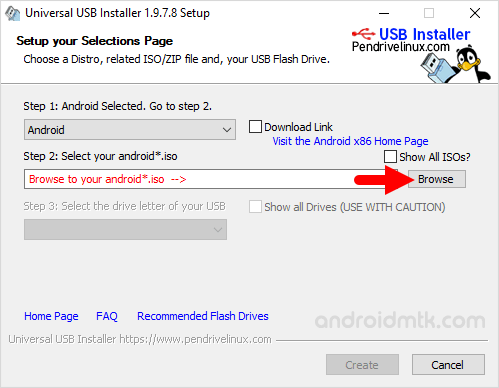
- #Create windows 10 bootable usb on android how to
- #Create windows 10 bootable usb on android install
- #Create windows 10 bootable usb on android for windows 10
- #Create windows 10 bootable usb on android windows 10
- #Create windows 10 bootable usb on android Pc
#Create windows 10 bootable usb on android Pc
#Create windows 10 bootable usb on android windows 10
How do I reinstall Windows 10 without a disk? Windows 10 Won’t Boot? 12 Fixes to Get Your PC Running Again How do I reinstall Windows 10 that won’t boot up? Select the “Use a device” option on this screen and you can choose a device you want to boot from, such as a USB drive, DVD, or network boot. Your PC will restart into the boot options menu. How do I create a Windows 10 boot disk?įrom within Windows, press and hold the Shift key and click the “Restart” option in the Start menu or on the sign-in screen. But the removable storage larger than 32 GB we use NTFS you can also use exFAT your choice. For removable flash drives and other forms of USB interface-based storage, we use FAT32. Use NTFS file system for installing Windows 10 by default NTFS is the file system use by Windows operating systems.
#Create windows 10 bootable usb on android install
You can now boot your UEFI system and install Windows from this FAT32 USB drive. UEFI systems (such as Windows 8) can’t boot from an NTFS device, only FAT32. Can I use NTFS for bootable USB?Ī: Most USB boot sticks are formatted as NTFS, which includes those created by the Microsoft Store Windows USB/DVD download tool. In contrast, NTFS is more robust and effective than FAT as it adopts advanced data structures to improve reliability, disk space utilization and overall performance. Make sure you have a disc inserted in your drive and then click the Burn.įAT32 is compatible with all operating systems since it’s a simple file system and has been around for a really long time. When it comes to creating bootable USB drives in Windows, Rufus is the best, free, open-source, and easy-to-use software. What is the best program to make a USB bootable? Select the formatted drive (disk 1 in this example) and right-click to go to “Properties.” Navigate to the “Volumes” tab and check the “Partition style.” You should see it marked with some kind of boot flag, such as Master Boot Record (MBR) or GUID Partition Table.
#Create windows 10 bootable usb on android for windows 10
What format should USB be for Windows 10 install? Then simply install Windows onto your computer directly from your USB or DVD drive. If you choose to download an ISO file so you can create a bootable file from a DVD or USB drive, copy the Windows ISO file onto your drive and then run the Windows USB/DVD Download Tool.
#Create windows 10 bootable usb on android how to
Step by Step Guide on How to Create a Boot Disk






 0 kommentar(er)
0 kommentar(er)
